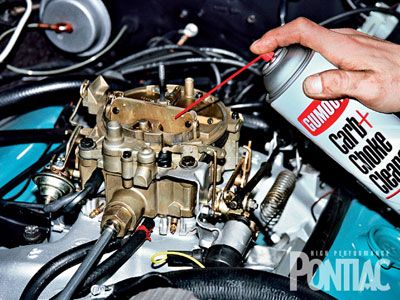
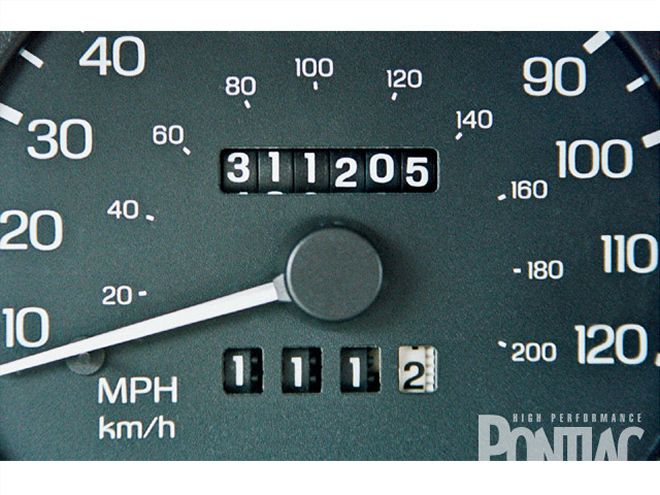
Regardless of the state of the economy, it makes sense to have your Pontiac last as long as possible. If you've made the investment of time and money in a vintage Pontiac, of course you want to preserve it. The same holds true for your later-model daily driver or weekend fun car, or even a new Pontiac.
Benefits of keeping your ride on the road for much longer than normal include the fun factor and a sense of accomplishment. In addition, you will become a credible spokesperson for the Pontiac brand. Nothing says more about the quality of a car than great looks and performance, especially if the mileage is high. So when the miles start accumulating, don't be shy about bragging.
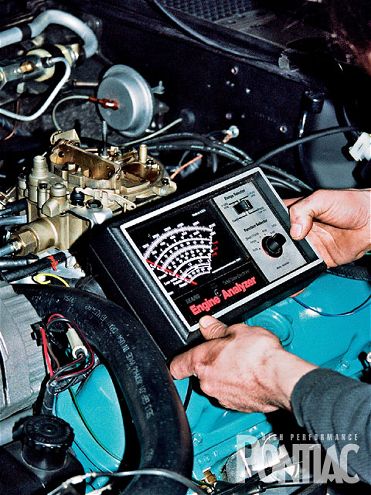
The purpose of this primer is to introduce procedures beyond the obligatory oil change and tire rotation. Practices established here can be executed by the home mechanic and are really not extraordinary. You just need to perform the steps. Some apply to an older model, such as carburetor service, while the majority of the tips pertain to any Pontiac. Of course, it's impossible to cover every aspect of preservation in an article this size, but these tips will certainly help keep your Pontiac in top condition.
While reading this article, keep in mind the type of use your Pontiac enjoys and the mileage accumulated yearly. The owner of a daily driver that travels 800 miles per week will need to execute a long-life program in a different manner than the owner of a collector car that only sees a few thousand miles per year.
The best approach for establishing a long life program is to keep records. This need be no more complicated than writing them on a note pad. Record dates and the mileage when a procedure is executed. For example, you may choose to clean and tighten the carburetor with every oil change but only lubricate the door hinges once or twice a year. Knowing when a service procedure has been done or needs to be performed makes the program much more efficient and easier to follow.
Another aspect of this plan is don't wait for something to break or fail. A true PM (preventive maintenance) schedule has components changed in the last 10 percent of their lifecycle. For example, your EFI Trans Am is approaching 192,000 miles and it still has the original electric fuel pump. You've enjoyed a very respectable life from the part. Instead of waiting for it to fail and strand the vehicle on the side of the road, you may choose to replace the fuel pump with a new ACDelco unit when the odometer turns 200,000 in anticipation of that failure.
Pontiacs are some of the finest cars in the world, and with only a little extra care, will keep going for many hundreds of thousands of miles. So let's keep those Tin Indians rolling! Let HPP know about your ride with over 200,000 miles.
Special thanks to Jim Taylor Engine Service for providing vehicles for photography. -Ed.
1 Keeping Your Cool
One of the most neglected parts of a modern vehicle is the air conditioning system. If you want to keep cold air blowing from the ducts and not incur a major repair expense, you need to care for the system.
Other than keeping the belt tight, A/C needs to have its refrigerant renewed. The system needs to be discharged, evacuated, and recharged with the proper amount of refrigerant. Evacuation describes creating a vacuum. This is done to eliminate any moisture that has entered the refrigerant. When refrigerant and water mix, it creates acid that destroys the A/C components. Water boils in a vacuum at 50 degrees F. The ambient temperature needs to be above that for the water to be boiled out. It will take a minimum of a half-hour to sufficiently remove the moisture from a full-size Pontiac A/C system. The last step is to install the proper amount of refrigerant. This specification can be found under the hood and is usually on the compressor, heater box, or radiator support.
To properly service an A/C system, you will need a set of manifold gauges and an electric vacuum pump. It is best to leave this task to a professional that has an A/C charging station, along with a freon recovery machine. It is illegal to deliberately discharge refrigerant into the atmosphere. A complete service usually costs around $100 and varies with the refrigerant capacity.
2 Distributing The Good
Keeping the dwell of the breaker points properly adjusted will provide peak performance and fuel economy. As the points wear, the dwell increases and the ignition timing retards.
Don't be afraid to look inside the distributor in between tuneups. Make sure the centrifugal weights are free and well lubricated.
If your Pontiac has breaker points, readjust the dwell once every 2,000 miles. With the Delco V-8 distributor, this is very easy using a dwell meter. The dwell controls the coil saturation and directly impacts performance and fuel mileage. Examine, clean, and lubricate the centrifugal weights, and don't forget to oil the distributor wick. Place a small amount of distributor-cam lube on one lobe every 4,000 miles to minimize rubbing block wear.
With HEI, remove the ignition module once every two years, and renew the heat sink/dielectric grease underneath it. This material pulls heat from the module and makes it last much longer. When the grease gets old, it loses its heat-transfer ability. Also, maintain the advance weights as is recommended with the breaker points.
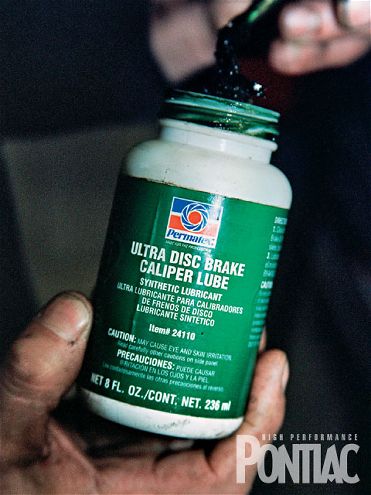
3 Lube It Up
Synthetic disc-brake lubricant resists being washed off while driving in the rain. It's also an excellent choice for drum-brake adjusters and the slide points on the backing plate.
Have you ever performed a brake job without changing the brakes? Well, it's about time that you did. Many enthusiasts and mechanics don't think about servicing the brakes as preventive maintenance before the pads or shoes wear out.
The main reason for premature lining wear is a lack of lubrication on the caliper pins and backing plate with a drum design. This often results in uneven wear that will force a renewing of the friction material because it's only worn in one place. Depending on the number of miles you drive your Pontiac per year, a service schedule needs to be created. Once a year is usually all that's required.
Remove the brake parts, and clean and polish any areas of contact where movement is realized. Treat the areas with a high-quality synthetic brake lubricant that can be purchased at a better auto parts store. It will come in a small jar and will last for many years. Clean the shoes/pads with sandpaper, then spray them with brake cleaner and examine the rotors and drums for wear.
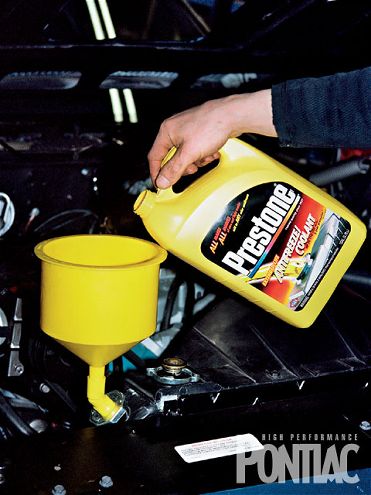
It is a good idea to build a relationship with a parts store or shop that has a brake lathe. Have the technician place the drum/rotor on the lathe and adjust the cutting tool so that it just touches. This will determine the amount of runout, and a very minute cut can be made to bring the friction surface to the proper condition. Many technicians don't do this. They make an aggressive cut that removes more material than is necessary to bring the drum/rotor back to like new. If the part doesn't need to be machined, just remove it from the lathe.
Don't forget to take apart, clean, and lubricate the adjuster on drum brakes while also inspecting the parking brake cable/mechanism. Examine, clean, and repack the front wheel bearings. By doing this, you will greatly extend the life of the pads and shoes while keeping the braking performance at 100 percent.
4 Beyond Freezing
Changing the antifreeze every few years is one of the best things that you can do for your Pontiac. Other than damage from overheating, the number one cause of head-gasket failure is a lack of cooling system service. Checking the coolant's ability to resist freezing doesn't determine the strength of the anti-corrosion inhibitors.
When the engine coolant is heated and cooled over normal driving, the additive package that is blended in when the coolant is made is consumed. The result is antifreeze that looks fine and hasn't had its freezing point altered, but does nothing to keep corrosion at bay. Change the coolant every two years. The head gaskets, water pump, heater core, and radiator will last almost forever.
Don't forget to also check the hoses for deterioration. A coolant hose should be firm but pliable. If it's either very hard or soft and mushy, it needs to be replaced.
Many an engine has been ruined because of a lack of coolant service. Don't let yours be one of them.
5 Change Is Good
Almost any machine has what is considered working fluids. In a car, they are the power steering, brake, and transmission fluids. The differential fluid is considered a lubricant. None of these fluids, including what is found in the differential, have an indefinite life expectancy. They are heated and cooled, absorb moisture, and are subjected to an infusion of dirt and grit. Thus, they need to be changed at least every three years.
Brake fluid is especially sensitive to wicking in moisture, and the system should be serviced with only new, fresh fluid--not a 3/4-full can that you had sitting on the shelf for three years. Investing in a hand-held, one-man bleeding tool (approximately $70) makes the task very easy and efficient.
To change the power steering fluid, you can use an inexpensive cooking baster to suck out the old fluid; then pour in the proper fluid. Consult your Pontiac owner's manual for the correct fluid. Many think it's alright to use ATF, and in some cars, it is. Others require a specific power steering fluid.
After changing the fluid, you need to bleed the system. This is very easy. Jack up and support the frontend so the tires don't touch the ground. With the engine idling and the cap off the PS reservoir, keep turning the steering wheel slowly lock-to-lock. After a few complete turns, check the fluid for air bubbles. If there are signs of air still trapped in the fluid, do a few more complete steering wheel rotations. Top off the level and you're done.
Installing an ATF pan with a drain plug or welding one into the factory pan makes trans fluid changes very easy. Keep in mind that you cannot drain the fluid from the torque converter, so it will take a few services to get it all replaced.
6 Grease Monkey
If your Pontiac has a greaseable front-end, don't forget to service it properly. This begins with using a suitable chassis lubricant in your grease gun and wiping off the fitting with a clean rag before you attach to it. If you don't wipe it clean, you will pump all of the grit and dirt into the part and it will wear prematurely. Carefully pump the grease gun while watching the rubber boot. You want enough grease to exit the perimeter of the boot to push out any water or moisture that is there. If no water comes out, as soon as you see the grease, stop. Wipe the joint clean with a rag.
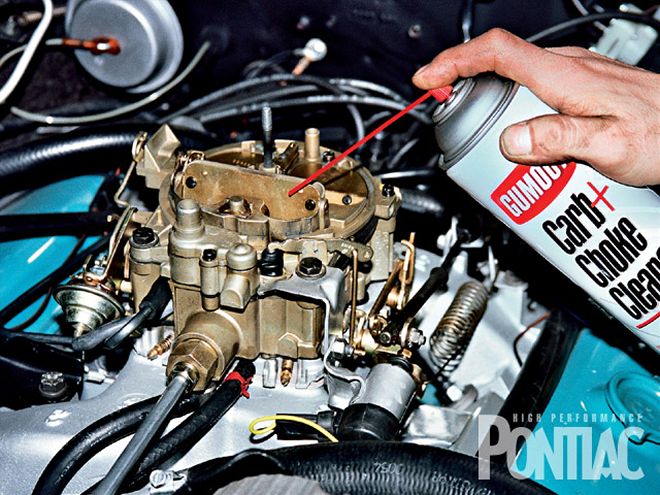
7 Fuelishly Clean
Carbon deposits form in any engine due to the chemical composition of the gasoline. The result is the need for higher octane fuel and a degradation in engine performance. To keep deposits at bay (either carburetor or EFI engines), use a name-brand gasoline, which advertises that it limits carbon formation. This alone will not be enough. Treat the fuel tank with a high-quality cleaner such as Chevron Techron Fuel Systems Concentrate. This product is very effective in both EFI and carbureted Pontiacs. When used every few thousand miles, it removes carbon deposits.
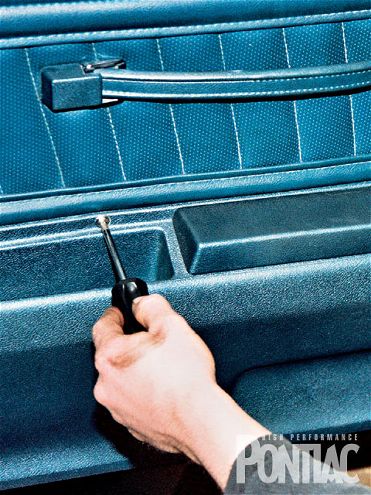
8 Under The Roof
Nothing makes a car last longer than being parked indoors on dry pavement when not in use. Many don't realize that dirt or gravel is the worse environment on which to park since the moisture in the ground attacks the underside of the car, rusting everything. If you are forced to park outside on dirt, an inexpensive plastic tarp on the ground in the parking spot will do a great deal as a vapor barrier. Better tarps are offered in black and green instead of the traditional blue, so it is possible to make it more eye appealing. Hold the tarp to the ground with some bricks or rocks and it should stay put under windy conditions.
When parking the car outside, employ a windshield sunshade in the summer and leave a window cracked open to let some of the heat out. This will not only make the car more comfortable when you enter, but will save the plastic interior parts from drying out.
9 Righty Tighty
Schedule a time to go around your Pontiac once or twice a year to tighten all the fasteners that are easily accessible. This should be done for the interior and the rest of the car. Keeping everything tight will also alert you to an impending problem while your ride remains squeak and rattle free.
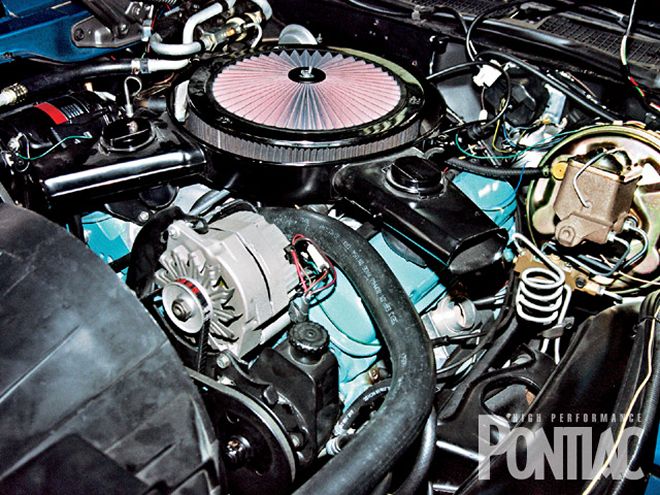
10 Cold Running
Many Pontiac hobbyists falsely believe they are doing well by allowing the engine in their car to warm up, especially on a cold winter day. This cannot be further from the truth. During cold operation, an engine has approximately 1,000 percent more piston ring wear than at normal operating temperature. This is due to the bores being cold and the required rich mixture (air/fuel ratio), along with excessive restriction to cold oil flow.
In addition, the rich mixture tends to wash the oil from the cylinder walls and leaves no lubrication for the piston rings. Carbon deposits on the intake valves and in the combustion chambers form at an exponential rate when the engine is cold. Therefore, it's best for any engine to run cold for as short a time as possible. This can be accomplished by driving the Pontiac away as soon as the oil pressure is up, which is confirmed when the dash light goes out or it registers on a gauge. But the vehicle must be driven moderately until both the coolant and oil are up to operating temperature.
Since many Pontiacs don't have a coolant gauge or oil temperature reading, the heater output is usually a good indicator. Once warm air is exiting the heater, the engine will require a few more miles to build oil temperature. The engine oil always takes longer to warm than the coolant.
By driving the vehicle, the engine coolant may reach 160 degrees F in a few minutes in comparison to the 10 or more minutes it may take idling on a cold winter morning. Thus, instead of 10 minutes of excessive wear, the parts will only be exposed to a few minutes of extreme operation.
Not only does this procedure decrease engine wear, but it also builds heat uniformly throughout the entire drivetrain. When an engine is left idling to warm up, the transmission, differential, and wheel bearings are still at or near ambient temperature.
If your Pontiac is too balky to drive when it's cold, then adjust the carburetor and choke properly and it will no longer be an issue. A misadjusted choke circuit is no excuse for idling an engine to warm up.
11 Rub Me The Right Way
An inexpensive can of clear spray silicone lubricant can go a very long way in keeping any rubber molding, seal, or boot in service. Treat the door and trunk seals this way, along with the boots on the constant velocity (CV) axle joints on a front-wheel-drive application.
12 Slam Dunk
If you love your Pontiac, don't slam the doors when you close them. This beats up the hinges and lock mechanism, and causes the window track to eventually loosen up, sound tinny, and rattle. The same holds true for the hood, glovebox, and trunk lid. Be gentle and body integrity will stay like new.
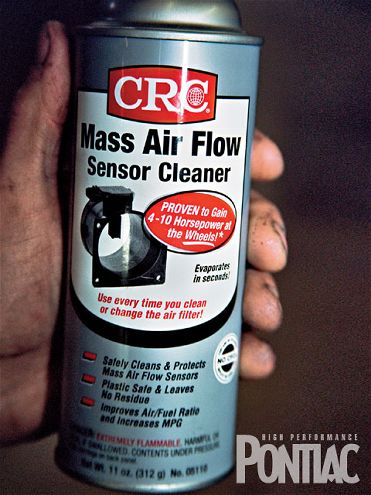
13 Carb Considerations
A carburetor should always look as if it was just rebuilt. A routine cleaning will accomplish this.
For a carburetor to perform properly, it is important to keep it clean from varnish deposits that will form. Simply removing the air cleaner and spraying the throttle bores and exterior with some carburetor cleaner is all that needs to be done for peak performance. Once a month on a daily-driven car will keep the carburetor performing like new. Keep in mind, however, that carb cleaner will remove paint on restored parts.
14 EFI Considerations
EFI engines need the throttle body and MAF serviced (if so equipped).
An EFI Pontiac needs to have the throttle body cleaned. If the throttle plates are treated with a coating, then a throttle body spray cleaner needs to be used. If they are not treated then carburetor cleaner will suffice. Not sure? Then always use spray throttle body cleaner. Open the throttle plates so that you can clean on both sides. CRC makes a MAF (mass air flow sensor) cleaner that works very well and should be used whenever you service the throttle body.
15 Directional Rotation
A rubber drive belt will take a set from being installed and operated in one direction. Whenever removing a belt that you plan on reusing, mark the direction of rotation with chalk before removal. This way, you can install it in the same direction of rotation. If the belt is installed opposite to the rotation, it has the potential to stretch excessively and either fail or jump off the pulley. A good mechanic always installs a belt in the same direction it has been used.
16 Make It Shine
Keeping your engine clean from grease and oil helps it run cooler and extends the life of the parts. Over time, grease and oil will attack electronics, hoses, belts, and especially the A/C lines. In addition, it's more difficult and less enjoyable to work on a dirty engine. A good biodegradeable degreaser sprayed on a cold/warm engine and rinsed off with a garden hose every time you wash the vehicle will keep it looking like new under the hood.
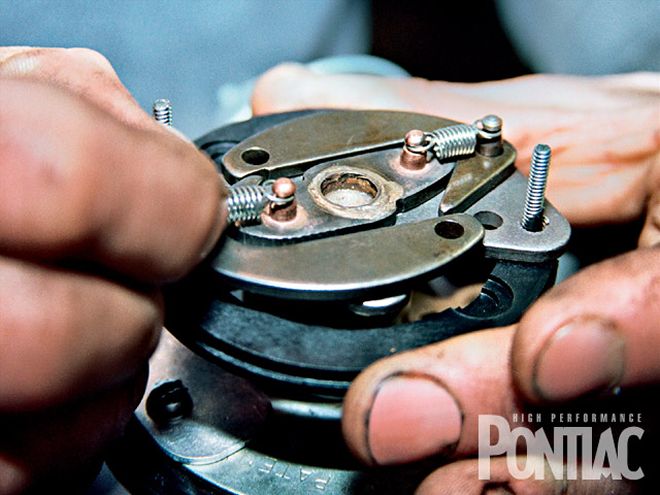
17 Don't Cheap Out
When it comes time to buy parts for your Pontiac, don't look for the cheapest brand, believing if it looks the same, then it is the same. There are differences that the naked eye cannot detect. With a newer Pontiac, stick with factory replacement parts and pay a little extra. The old slogan, "Keep your GM car all GM," is still correct.
If factory parts aren't offered anymore, then use high-quality components from a reputable source. Your Pontiac is only as good and reliable as the parts that you install.
The same goes for oil and filters. Good quality lubricants cost more to make. A name brand oil and high quality air, fuel, and oil filters are well worth the investment.
18 Let The Heat Out
Whenever an engine is shut off after being run, the underhood temperature increases due to the lack of air movement and because the coolant is no longer being circulated. Every underhood component rises in temperature. This is called heat soak. Heat attacks the electronics, the battery, the rubber belts, the hoses, the engine gaskets, and the soft metal of the carburetor. When possible, open the hood to let the heat rise instead of being absorbed into the parts. Doing this will add a good deal of life to every component under the hood. This practice is especially important with a modern Pontiac since there is less room under the hood and more electronics, plastic, and rubber parts.
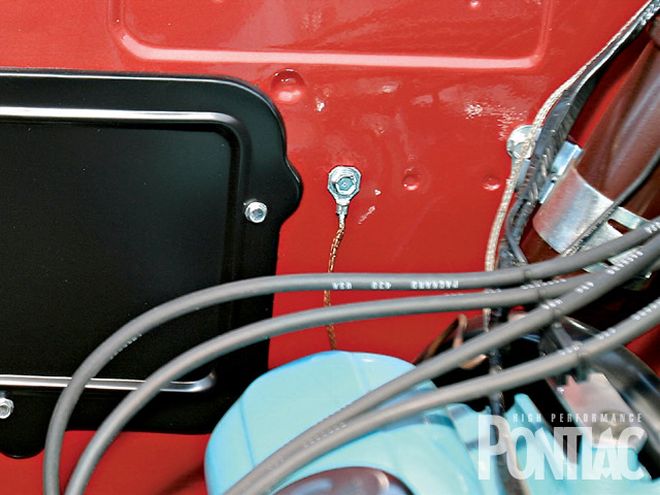
19 Ground Is Good
Here is an example of an engine ground on an early '60s Pontiac. Get to know where the major ground circuits are on your Pontiac (engine block, lights, and so on). Every few years, take them apart and clean the connections. An electrical circuit is only as good as the ground path. Some dielectric grease will help keep the newly cleaned ground performing perfectly under all conditions. Remember that electricity is lazy and will take the path of least resistance. Often a poor ground will be hard to diagnose since you cannot anticipate how the circuit may respond.
20 Relative Motion
Turning the steering wheel while your Pontiac is stationary puts extreme pressure on the power steering unit and hoses and causes excessive wear on the frontend parts. Get into the habit of allowing the Pontiac to roll ever so slightly while turning the steering wheel, even when parallel parking. The power steering pump and frontend will thank you.
21 Bonus Tip
Take It Off
We know that washing and waxing your Pontiac not only makes it look great, but helps make it last. A quality wax protects the paint and bodywork, while repelling dirt that can grind into the finish. Don't forget the door jams, trunk, fenderwells, undercarriage, and underhood areas.
Along with typical cleaning, you should also consider removing your Pontiac's trim and bolt-on spoilers each year to clean underneath them. On vintage Pontiacs, debris and dirt gets behind the front and rear window moldings and rots out the window channels. Remove the moldings using a tool designed for the job and clean out those areas. Wheelwell moldings also trap dirt and debris, and should be removed at least once per season to clean the area between them and the wheelwell lip. Any Pontiac with spoilers and/or ground effects can trap dirt and moisture beneath them as well.